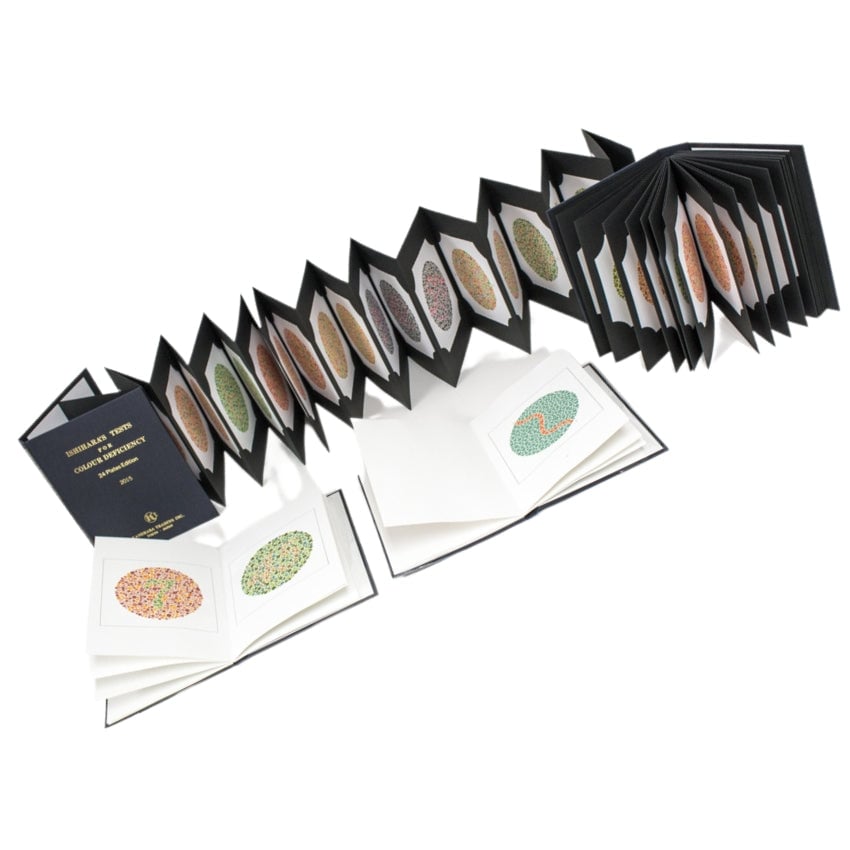The Ishihara color test is a test for color blindness. It was named after its designer, Dr. Shinobu Ishihara (1879-1963), a professor at the University of Tokyo, who first published his tests in 1917. It makes use of the peculiarity that in red-green blindness, blue and yellow appear remarkably bright compared to red and green. It consists of a number of colored plates, on each plate is printed a circle made of many different sized dots of slightly different colors, spread in a random manner. Within the dot pattern, and differentiated only by color, is a number. What, or even if, a number is visible indicates if and what form of color blindness the viewer has. The full test consists of thirty-eight plates, but the existence of a deficiency is usually clear after fewer plates. The Ishihara Color Charts are accepted by leading authorities worldwide as a simple and accurate test method.
Features
- Ideal for commercial/industrial color screening for protan and dutan defects
- Patients identify numbers/patterns in dot matrices of varying color/intensity
- The 14-plate (Concise) Edition is a selection from the 38-plate (Complete) Edition for accurate color deficiency exams










